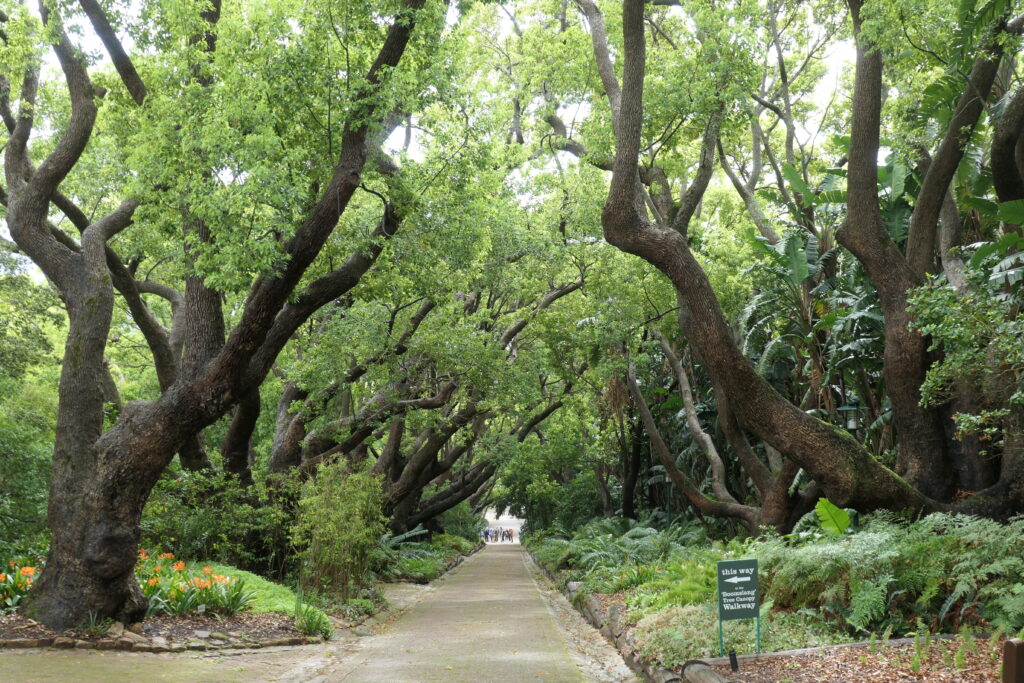
Avenue of Kirstenbosch lined with Camphor and Morton Fig trees
In my mind’s eye, the terrain of South Africa is brown: dried grasses; elephant-damaged trees, blackened shadows against the open sky; lichen-covered rock outcroppings; murky ponds with hippopotamus eyes peeking above the water line; rutted and dusty dirt roads; barren mountains rising above the rolling hills. Even as I made my way with my travel companions to Cape Town, the first stop on our two-week journey to “Ignite our Heart”, the earthen tones of brick houses, the discolored metal roofs of row after row of shanty houses (now called “temporary shelters”), and the grey sky seemed to confirm my first impressions. Yet, after three days of roiling ocean, brilliant blue skies, and primary-colored houses, my ideas were changing.

Canopy walkway among the trees
As we left Cape Town on the fourth morning, we stopped at Kirstenbosch (translated as Kirsten’s Forest, although not attributed to a particular person) National Botanical Garden on the eastern slope of Table Mountain. I was immediately immersed in the lush, green subtropical rainforest. Described as one of the greatest gardens in the world (good marketing, no?), Kirstenbosch is truly a wonder.
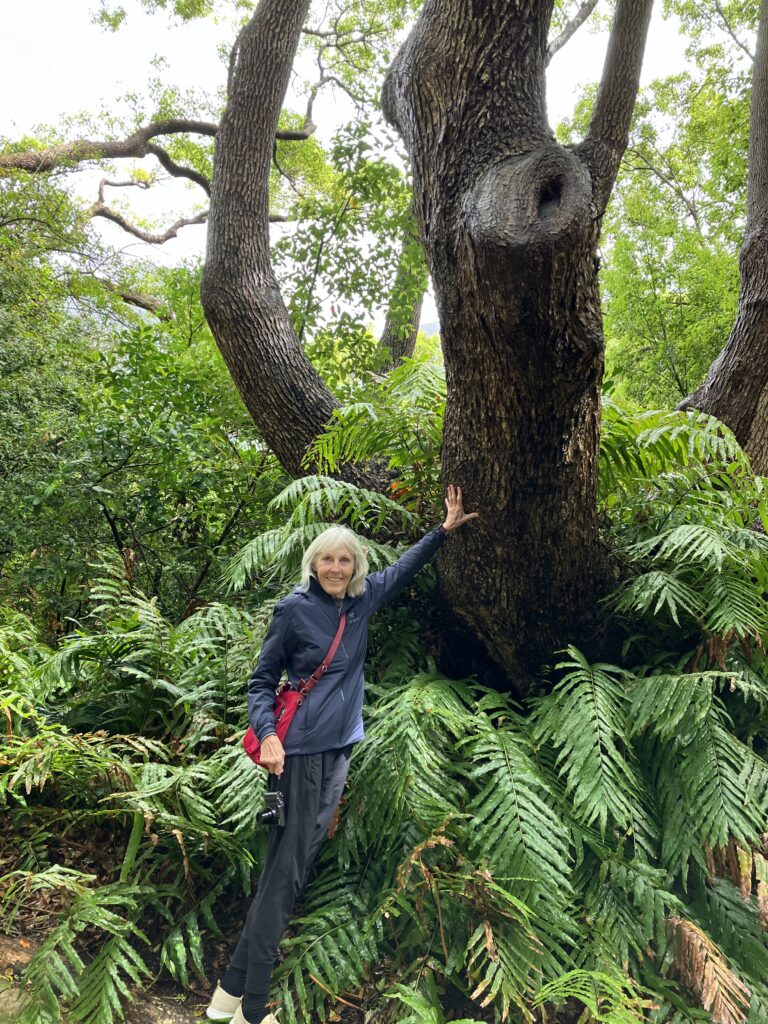
Opening all the senses!
A little history from the South African National Biodiversity Institute’s website (SANI administers the national parks in the country’s six biomes): Bones of Stone Age people have been found in the area. The Khoikhoi people are thought to have populated Kirstenbosch for at least 2,000 years before the first Europeans (representatives of the Dutch East India Company) created a refreshment station for passing ships in 1652 on the land next to False Bay. In 1795, Kirstenbosch was handed over to the British Occupying Forces who chopped down the trees to build houses and ships. In 1895, Cecil John Rhodes, then prime minister of the Cape Colony, purchased the land, which was in disarray, and planted an avenue of Camphor and Moreton Bay Fig trees as part of re-establishing the gardens. When he died in 1902, he bequeathed the land to the British government who set aside Kirstenbosch to establish a national botanical garden.
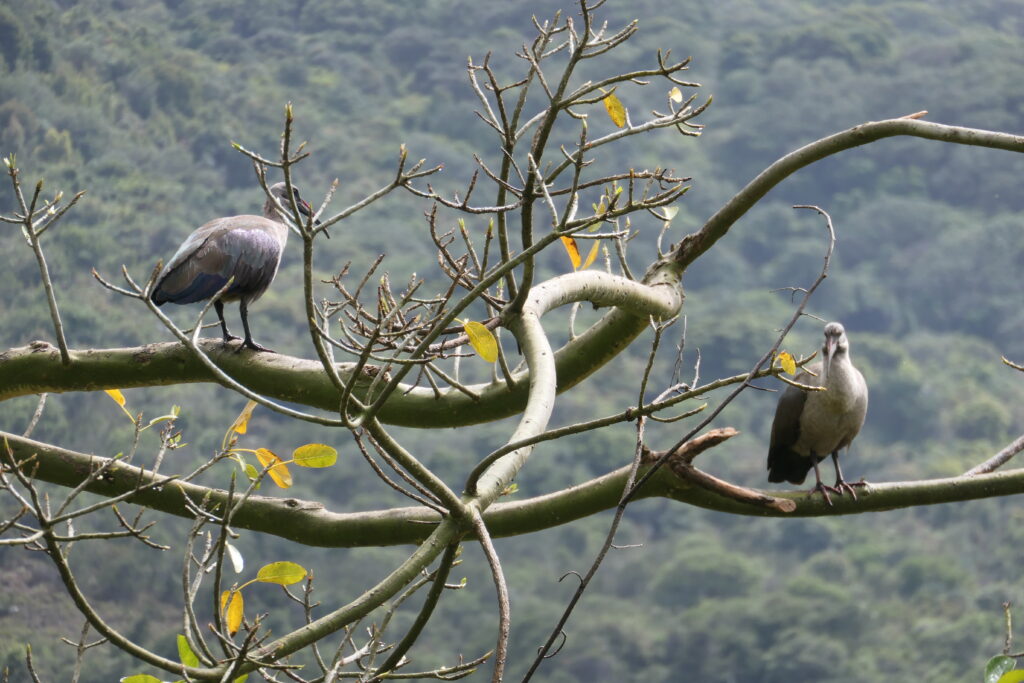
Birds against the slope of Table Mountain
We saw the benefit of years of required work to establish the garden and to maintain it in pristine condition, especially when one considers early work was done by hand, lugging rock and trees and plants up and down slopes, establishing trails, carving out avenues, planting thousands of species of plants, even millennia-old cycads that have survived since the time of dinosaurs.
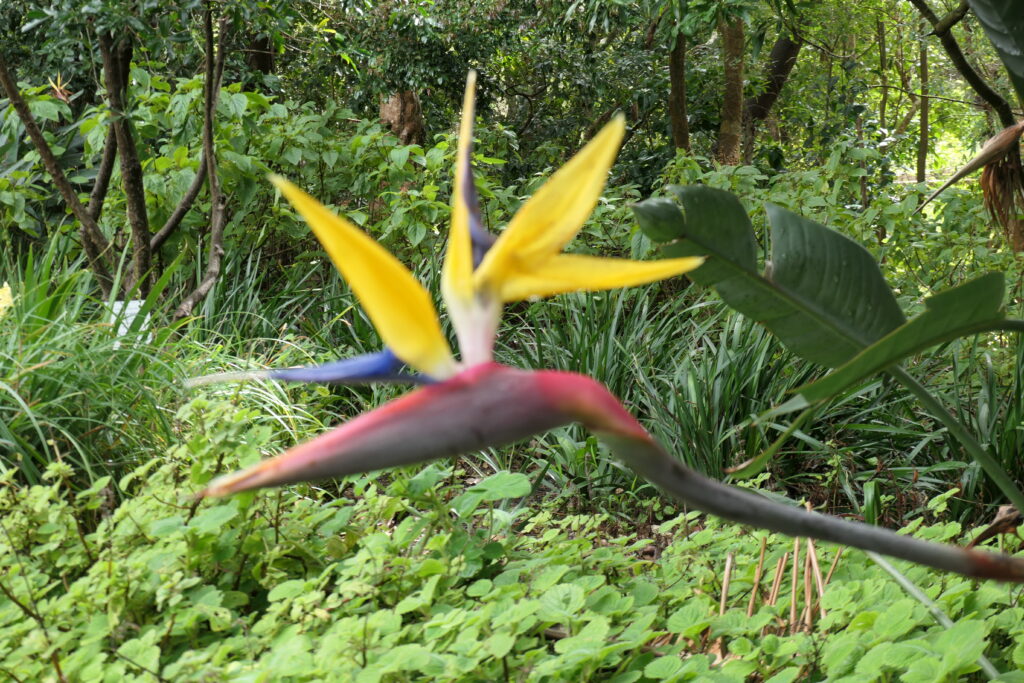
Gold Bird of Paradise in honor of Nelson Mandela
The geology of Kirstenbosch is as ancient and as amazing as the flora: quartz sandstone (the Peninsula Formation) sits on alternate layers of pink siltstone, marron mudstone, and pale brown sandstone (together, known as the Graafwater Formation). These formations rest on the bedrock of Cape Granite. It was raining when we arrived but like a magical curtain, once the rain stopped, the mist lifted above the abundant trees and opened the vista of the rugged stone of Table Mountain.
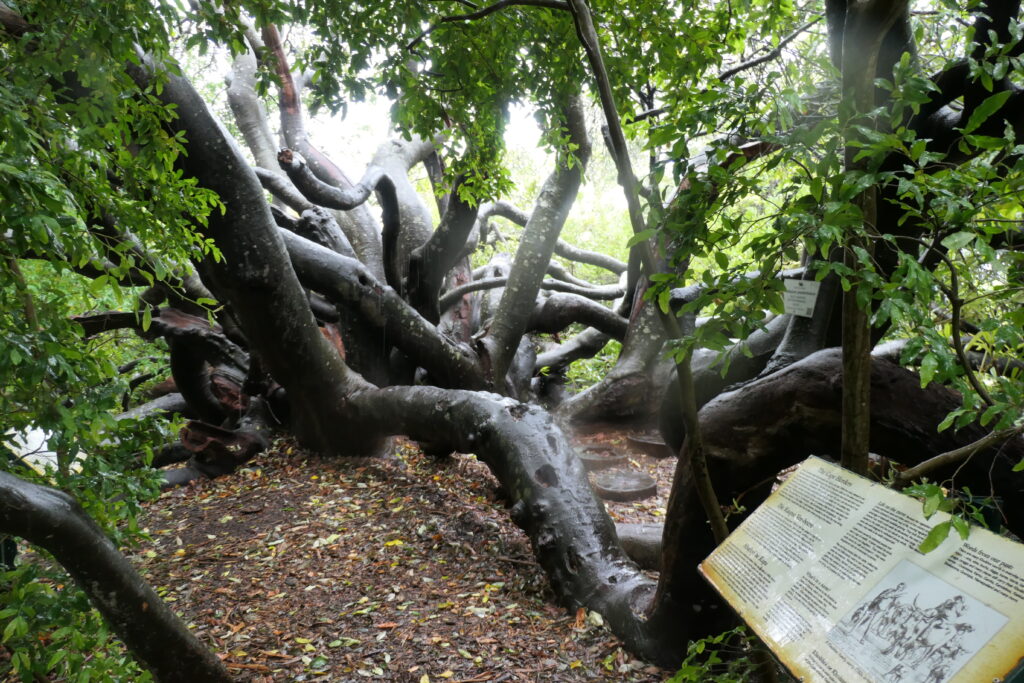
Almond tree
Words cannot describe the intensity of the greens, every shade imaginable, light, dark, neon, pale, pine, glossy, variations on the theme of green. The leaves glistened from the recent rains. As the clouds slowly parted, sunlight sparkled and turned the water drops into tiny rainbows. We walked on the avenue where Cecil Rhodes planted Camphor and Fig trees. We skirted under twisted, giant, old Almond Trees. We wound around trails lined with spice trees (cinnamon, cardamon). We marveled at the huge ferns and cycads. We almost got lost trying to find the Tree Canopy Walk, a steel and timber-railed walkway designed in the shape of a boomslang snake (one of my grandson’s favorites), swallowed by the canopy and bright yellow flowers starting to bud. From here, we gazed as the mist rose above Table Mountain, providing that iconic view for which Kirstenbosch is known.
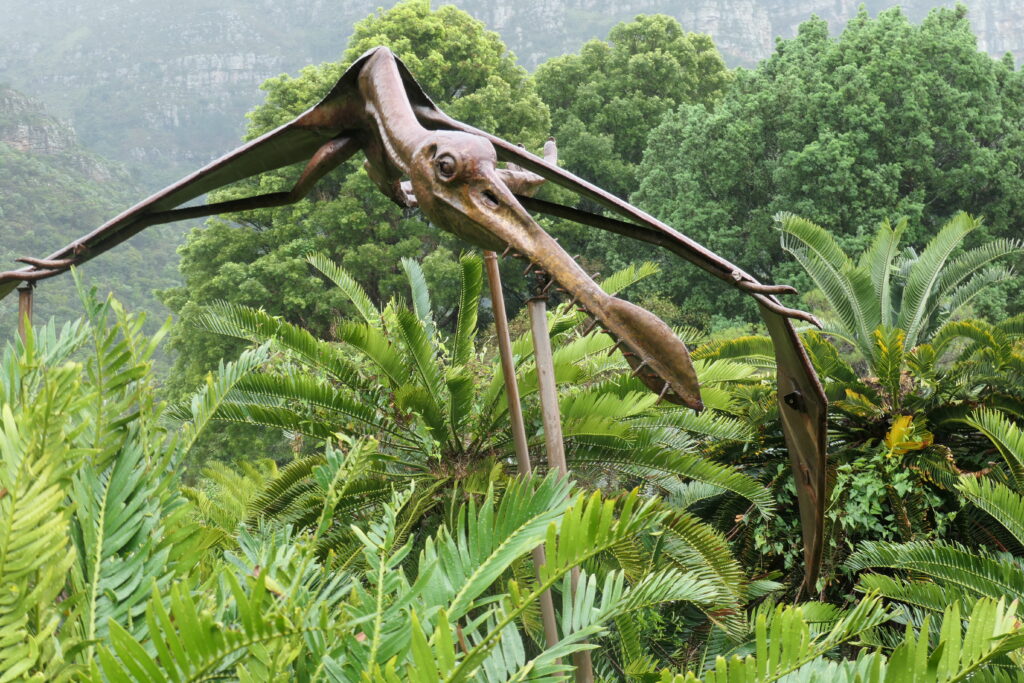
The forest as it might have been in the age of dinosaurs
I wish I’d had time to spend the entire day in the Gardens, hiking trails, listening to guides explain the flora and fauna and the uniqueness of this biome, marveling at the golden Bird of Paradise especially bred in honor of Nelson Mandela, being still with those giant and mighty trees, who communicate with one another and other species (so why not also with me?), soaking in this magnificent nature—and recognizing that my first impression of the tip of the huge continent of Africa being brown was so wrong.
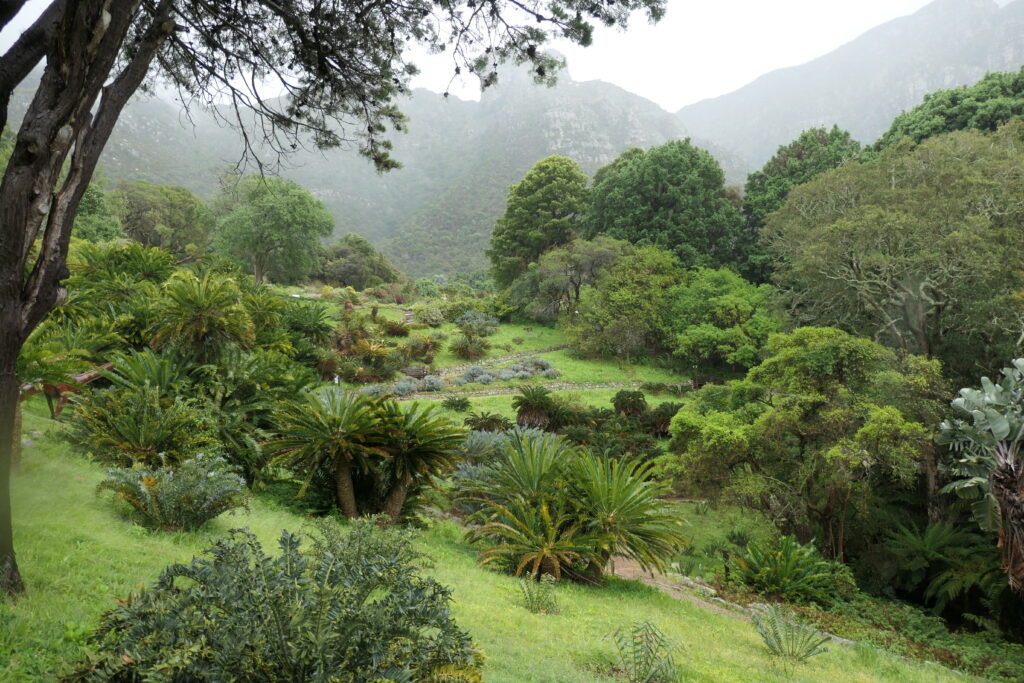
Amidst rising mist, Table Mountain comes into view
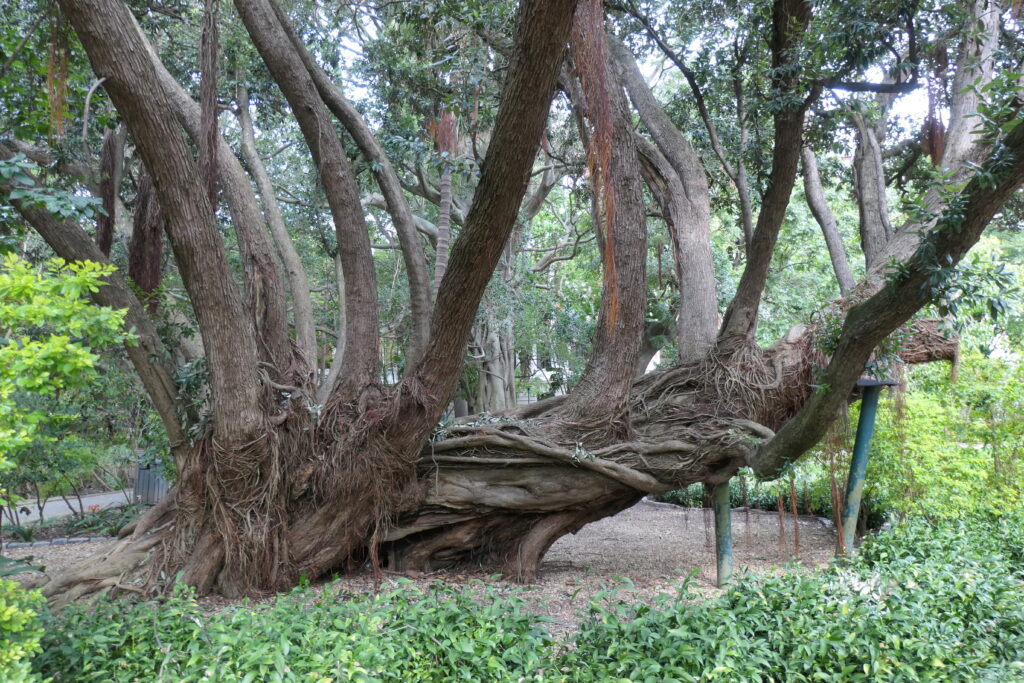
So old–what knowledge must be contained within its roots!